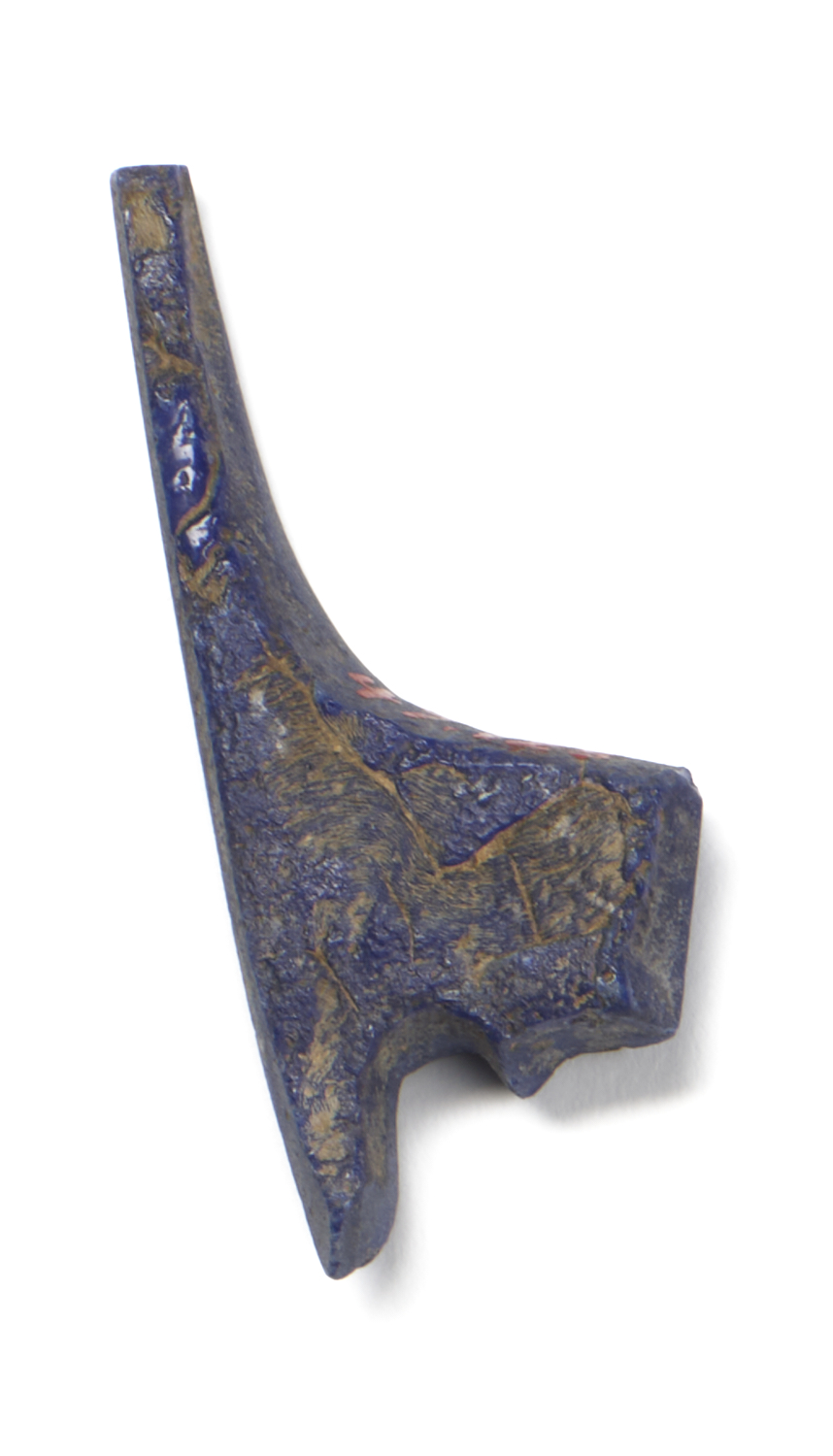Inlay Fragment of the Crown of Lower Egypt
Dark blue glass inlay. It is in the form of the dsrt, or Red Crown. The Red Crown symbolized Lower Egypt. The crown is rounded and angled up toward the back at which point in extends upward into a tall, narrow spike. The crown is cut to fit over the ears and has a notched area for a forehead band. Often the Red Crown has an uncurling spiral at the front, but this example does not. This inlay has been broken into two fragments and repaired and the two fragments are slightly different colors. The top of the projecting spike is squared. The upper surface of the inlay has been polished and the edges have been rounded off. The flattened back surface is unpolished and has deep chisel marks.
Provenance
Provenance (from the French provenir, 'to come from/forth') is the chronology of the ownership, custody, or location of a historical object. Learn more about provenance at the Walters.
Khawam Brothers, Cairo, [date and mode of acquisition unknown]; Henry Walters, Baltimore, 1931, by purchase; Walters Art Museum, 1931, by bequest.
Exhibitions
| 1982 | 3000 Years of Glass: Treasures from The Walters Art Gallery. The Walters Art Gallery, Baltimore. |
Conservation
| Date | Description | Narrative |
|---|---|---|
| 11/18/1980 | Examination | examined for condition |
Measurements
Overall: 2 1/8 in. (5.4 cm)
Credit Line
Acquired by Henry Walters, 1931
Location in Museum
Not on view
Accession Number
In libraries, galleries, museums, and archives, an accession number is a unique identifier assigned to each object in the collection.
In libraries, galleries, museums, and archives, an accession number is a unique identifier assigned to each object in the collection.
47.125






